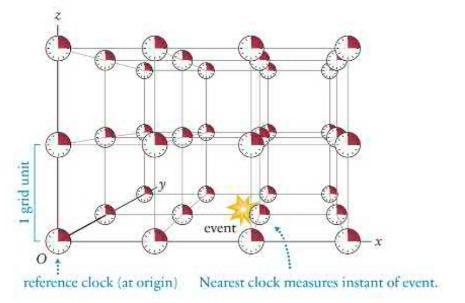Imagine you are at the origin of Figure 14.6, where, as in Exercise 14.2, a light pulse
Question:
Imagine you are at the origin of Figure 14.6, where, as in Exercise 14.2, a light pulse takes \(1 \mathrm{~s}\) to travel one grid unit. When your clock reads 12:00:05, what do you observe as the reading on the clocks at positions \((3,0)\) and \((0,2)\) ?
Data from Figure 14.6

Data from Exercise 14.2
Suppose you want to synchronize the network of clocks in Figure 14.6 by emitting a single light pulse at the origin. This signal triggers each clock to start running from some initial setting. If it takes the signal \(1 \mathrm{~s}\) to travel along one grid unit and if the reference clock is set initially to 12 o'clock, what should the initial settings be for each clock \((a)\) along the \(x\) axis and \((b)\) along the diagonal in the \(y=0\) plane?
Step by Step Answer:






